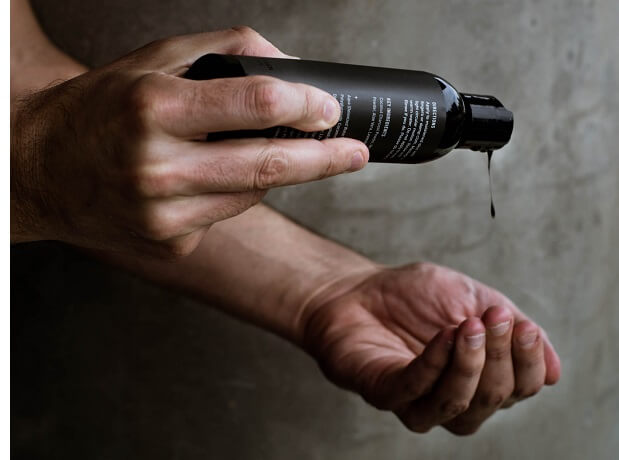Best Ways to Remove Ear Hair
What is Ear Hair?
Ear hair refers to the hair that grows on the outer ear and inside the ear canal and don't we just all love that as part of our look. A common cosmetic concern is the presence of unsightly tufts of dark hair sticking out of the ear canal and growing on the outer ear. This hair can vary in thickness and length, and while it is more common in older adults, it can affect people of all ages. Hair can also grow in the inner ear due to hormonal changes.
Understanding Ear Hair
What is Ear Hair?

Ear hair, also known as auricular hair, refers to the hair that grows in and around the ear canal and outer ear. Ear hair consists of the hair shaft, which is the visible part, and the hair root, which is beneath the skin. It is a natural part of the human body and serves as a protective barrier against external irritants, such as dust, dirt, and bacteria. While ear hair can be found in both men and women, it is more common and tends to be thicker in men due to hormonal influences.
Why Does Ear Hair Grow?
Ear hair growth is influenced by a combination of genetic, hormonal, and environmental factors. The primary hormone responsible for ear hair growth is testosterone, which is present in higher levels in men. Testosterone influences the hair bulb, which is responsible for hair growth. As men age, their bodies produce more testosterone, leading to an increase in ear hair growth. Additionally, genetics play a significant role in determining the amount and thickness of ear hair. Some people may inherit a tendency to grow more ear hair due to their genetic makeup.
Causes of Unwanted Ear Hair
Unwanted ear hair can be a nuisance, but understanding its causes can help in managing it effectively. Several factors contribute to the growth of ear hair, including:
- Genetics: Just like other physical traits, ear hair can be inherited. If your parents have noticeable ear hair, you might be predisposed to it as well.
- Hormonal Imbalance: Hormonal changes, especially an increase in testosterone, can lead to more ear hair growth. This is why many men notice more ear hair as they age.
- Aging: As we grow older, our bodies undergo various changes, including alterations in hair growth patterns. Ear hair can become thicker and more prominent with age.
- Medical Conditions: Certain medical conditions, such as hypertrichosis, can cause excessive hair growth all over the body, including the ears.
- Medications: Some medications, like anabolic steroids and testosterone replacement therapy, can stimulate ear hair growth.
Understanding these causes can help you choose the most effective method for managing unwanted ear hair.
Importance of Ear Hair Removal
Risks of Excessive Ear Hair
Excessive ear hair can pose several risks, including:
- Hygiene Concerns: Excessive ear hair can trap dirt, dust, and bacteria, leading to infections and other ear problems.
- Aesthetic Concerns: Excessive ear hair can be unsightly and affect a person’s self-confidence and self-esteem.
- Hearing Problems: In rare cases, excessive ear hair can block the ear canal and affect hearing.
- Skin Irritation: Excessive ear hair can cause skin irritation and ingrown hairs, especially if not properly maintained.
Ear hair waxing, if not done carefully, can lead to complications and should be performed with caution.
It is essential to remove ear hair safely and effectively to prevent these risks. There are several hair removal methods available, including laser hair removal, waxing, and trimming. It is crucial to choose a method that suits your skin type and hair growth to avoid any adverse reactions.
Ear Hair Removal Methods
When it comes to removing ear hair, there are several methods to choose from, ranging from temporary to more permanent solutions. Here are some of the most common ear hair removal methods:
Temporary Hair Removal Methods
Temporary hair removal methods are quick and easy to use, but they require regular maintenance to keep ear hair under control. Some popular temporary methods include:
- Trimming: Using scissors or clippers to trim ear hair is a straightforward way to manage it. This method is quick and easy but needs to be done frequently.
- Waxing: Waxing involves applying hot wax to the ear area and then removing it with a cloth strip. While effective, this method can be painful and may cause ingrown hairs.
- Sugaring: Similar to waxing, sugaring uses a sugar-based paste to remove hair. It’s a natural alternative but can also be uncomfortable.
- Depilatory Creams: These creams dissolve hair at the skin’s surface, making it easy to wipe away. They are convenient but may cause skin irritation for some people.
- Tweezing: Plucking individual hairs with tweezers is another option. This method is precise but can be time-consuming and may lead to ingrown hairs.
FAQ
-
Why is it important to remove ear and nose hair?
- Removing ear and nose hair enhances facial grooming, boosts confidence, and improves hygiene by preventing the trapping of dirt and bacteria.
-
What are the best tools for ear and nose hair removal?
- High-quality ear and nose hair trimmers, professional waxing kits, depilatory creams for sensitive areas, and trimming scissors are effective tools for hair removal.
-
How often should I trim ear and nose hair?
- Regular maintenance is recommended, making ear and nose hair removal a part of your routine to prevent excessive growth.
-
Can I use the same trimmer for both ear and nose hair?
- Yes, many trimmers are designed for both ear and nose hair removal, offering precision and safety for both areas.
Why Remove Ear and Nose Hair?
While a certain amount of hair in these areas is natural and serves a purpose, excessive or visible ear and nose hair can impact your overall appearance. Hairy ears, in particular, can raise cosmetic and hygiene concerns, as excessive ear hair may be seen as unattractive and can harbor dirt and bacteria. Removing unwanted hair from these areas:
- Enhances Facial Grooming: Removing ear and nose hair contributes to a well-groomed and polished appearance.
- Boosts Confidence: Tidying up these areas can boost confidence by presenting a neater and more refined look.
- Improves Hygiene: Excess hair in the ear and nose can trap dirt and bacteria, making regular removal essential for hygiene.
Additionally, removing unwanted hairs from the ear and nose can improve overall grooming and hygiene.
Best Ways to Remove Ear Hair
These are some of the most effective methods for removing ear hair to achieve a clean and groomed look:
- Trimming: Use a high-quality ear hair trimmer to gently trim excess hair. Trimmers designed for ear hair provide precision and prevent accidental cuts.
- Waxing: Ear hair waxing, done by a professional or with a suitable at-home kit, offers longer-lasting results. It involves applying warm wax to the ear canal, removing hair from the root. However, it is important to be cautious as improper waxing can lead to complications. Always prioritize safety and seek medical attention if you experience any discomfort or issues post-removal.
- Depilatory Creams: Some men opt for this hair removal method formulated for sensitive areas. These creams break down the hair’s protein structure, making it easy to wipe away.
- Manual Plucking: For a more temporary solution, manually plucking ear hair with tweezers is an option. However, it may be uncomfortable and is not recommended for long-term use.
- Laser Hair Removal: Laser ear hair removal is an effective and safe method for permanent hair reduction. It uses advanced technology to target hair follicles, providing long-term results. Laser treatment can remove ear hair permanently, offering a comfortable and lasting solution compared to traditional methods.
Professional Ear Hair Removal
For those seeking more permanent solutions, professional ear hair removal methods are available. These methods often require a visit to a dermatologist or esthetician and include:
Electrolysis
Electrolysis is a permanent hair removal method that involves inserting a fine needle into each hair follicle and applying a small electrical charge. This process damages the hair follicle, preventing future hair growth. While effective, electrolysis can be time-consuming and may require multiple sessions to achieve the desired results.
Effective Nose Hair Removal Tips
Keep your nose hair in check with these helpful tips for efficient and pain-free removal:
- Nose Hair Trimmers: Invest in a quality nose hair trimmer designed to safely and precisely trim nose hair without causing irritation. A good trimmer can effectively manage both nose hairs and ear hairs.
- Regular Maintenance: Make nose hair removal a regular part of your grooming routine to prevent excessive growth.
- Professional Waxing: If you prefer a longer-lasting solution, consider professional nose waxing. Trained estheticians can safely and efficiently remove nose hair using a specialized waxing technique.
- Trimming Scissors: For visible nose hair on the edges, small trimming scissors can be used carefully to maintain a neat appearance.
Explore Hair Removal Tools at MyManFur

Discover a range of high-quality hair removal tools designed for ears and nose at MyManFur. Elevate your grooming routine with precision and effectiveness.



